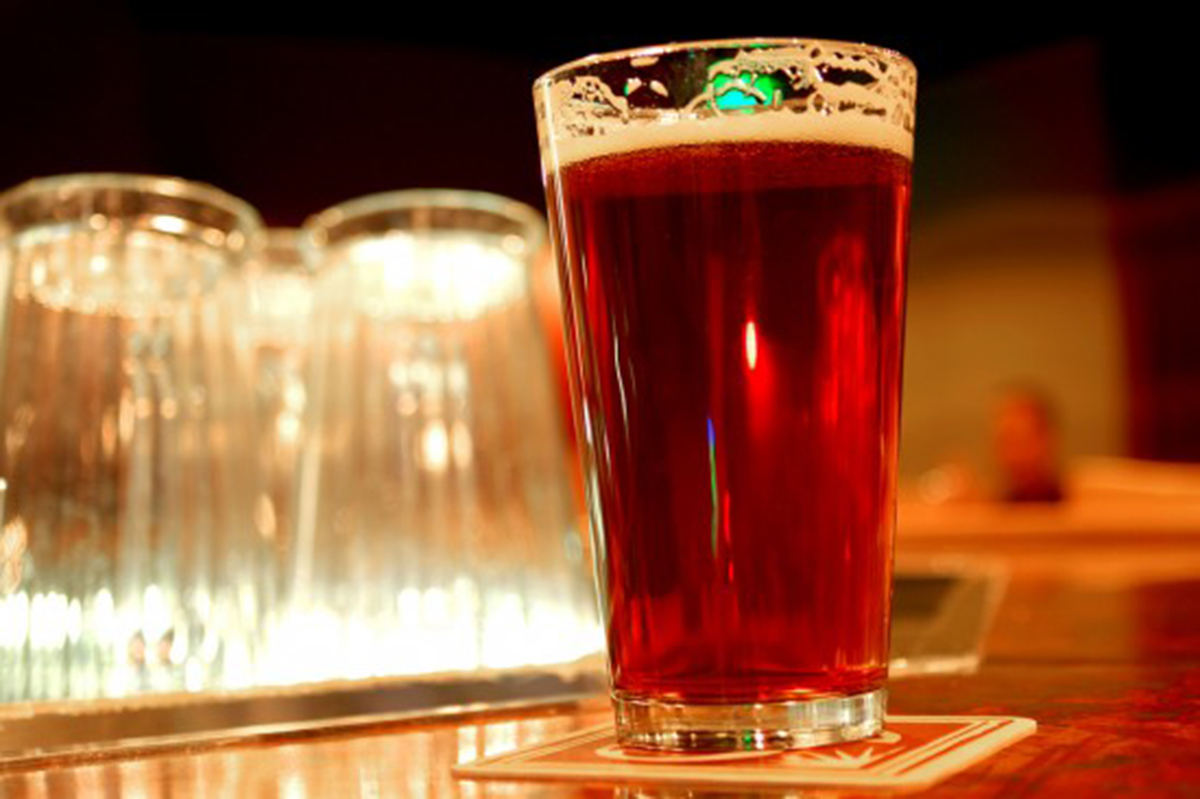Paleo and primal diets are based on the principle that we are all better off eating only those foods that were consumed by our ancient, paleolithic ancestors. There isn't any evidence that ancient humans drank alcohol on a regular basis, although alcohol does occur in nature, and there certainly isn't any evidence that they passed it up either.

Here are ten simple rules for drinking as healthily as possible.
1. Don't feel that you are sabotaging your diet by drinking.
There can be many good reasons not to drink ever or at all, but pursuing optimum health is not one of them. One group of researchers followed a group of 1800 men and women, all of them 55 years old or older at the beginning of the study, for the next 20 years. They found that two kinds of drinkers were the most likely to have died by the end of the study.
Heavy drinkers, people who downed more than 2 drinks a day, were 45% more likely to have died relatively early than moderate drinkers, people who drank 1 or 2 drinks several times a week. But teetotalers, people who didn't drink at all, were 51% more likely to have died by the end of the study than moderate drinkers, too.
The study also found that abstainers from alcohol were more likely to be unemployed. They were less likely to have stable family relationships. They were less likely to have close friends and less likely to be involved in social or civic organizations, and more likely to be divorced or widowed than moderate drinkers.
2. If you are going to drink with meals, drink red wine.
Red wine contains more antioxidant polyphenols than other alcohol beverages, and Cabernets contain the greatest antioxidant content among red wines. Red wine in general have about 2/3 greater antioxidant potency than whites. The resveratrol in red wine is of dubious value--only one, recent study has found an actual benefit--but other compounds in red wine, formed by the interaction of the wine with the oak in the cask in which it is aged, help regulate blood sugar levels, lower cholesterol, and actually do fight aging.
There isn't, by the way, any wine that goes with fish. The omega-3 essential fatty acids in cold-water fish are oxidized into potentially harmful forms by acetaldehyde, which the liver makes when it detoxifies alcohol. When you eat fish, skip the alcohol.
Read More: 4 Ways Alcohol Ruins Your Weightloss Plan
3. If you want to go for the hard stuff, drink spirits aged in wooden casks (brandy, cognac, scotch, and whiskey).
Hard liquor doesn't contain any carbohydrate, but it does contain a real kick of antioxidants, due to the interaction of the liquor with the wood in the barrels in which it is aged. Tequila is also aged in wooden barrels, but its antioxidant content has not been measured, although one study found that drinking tequila every day helps diabetics control blood sugars.
Seven More Guidelines for Drinking on a Low-Carb Diet
Light beer drinkers need to read the label.
4. Be aware that not all light beers are equally light.
Many light beers contain just 3 to 6 grams of carbohydrate, not enough to affect blood sugar levels (if you are not diabetic) or enough to cause the secretion of insulin, which increases the storage of fat. Some American brands like Michelob, however, contain 11 or more grams of carbohydrate per serving, which is enough to make a difference in blood sugar levels.

5. Regular beers and micro-brews are generally too high-carb for low-carb diets.
Regular American or Mexican beer contains about 15 grams of carbohydrate per serving. Drinking a regular beer is like drinking a couple of slices of bread. Micro-brews and dark beers contain about 25 grams per serving. If you drink two, you have consumed as much carb as in a small dessert.
6. There are some alcoholic beverages you should just never drink at all.
Fond of jello shots? How about those daiquiris you buy in a plastic package and freeze at home? Sugary alcoholic beverages can contain up to 80 grams of carbohydrate. That is more than most paleo dieters eat all day, and it is enough sugar to be mildly toxic, especially if the sugar is fructose. Sorry, but this means no Amaretto, no Frangelico, no Gran Marnier, no Irish Cream drinks, no Kahlua. Ditto, you can't drink Fuzzy Navels or American schnapps, although the European varieties are OK.
7. Eat before you drink.
You want to get a little buzz from your alcohol? We get it. Just don't drink and drive. But if you want to enjoy your alcohol but control your alcohol, eat something before you drink. A full stomach slows down the rate at which your body absorbs alcohol. Think of it as extending your pleasure. Never plan to "drink your dinner."
8. Try the every other one rule.
Always need a drink in your hand? Fine. Make every other drink sugar-free tonic water or Pellegrino (mineral water). You don't have to drink all night.
Read More: The Truth About Paleo Diets
9. Use those carbs.
If you choose to indulge in a sugary sweet alcoholic drink, or a hearty microbrew, or a dessert wine, don't flop down on the couch. Get out on the dance floor and use those carbs. If alcohol makes you more "sociable," use those carbs by making the rounds of the party. And leaving your drink behind frees up both hands for dancing.
10. Be a giver.
Paleo enthusiasts often expect their hosts to accommodate their dietary preferences. Don't be a burden to your party host. Ask if you can bring paleo-friendly or primal-friendly or low-carb snacks to the party. That way you will be sure you can stick to your diet, and you can be an example rather than a nag. Just don't try to steal the show.
Additional tips
Mind the serving size: It's easy to overlook the serving size of alcoholic beverages. Standard serving sizes are generally 12 ounces for beer, 5 ounces for wine, and 1.5 ounces for distilled spirits. Sticking to these can help control carb intake.
Avoid sugary cocktails: Many cocktails are made with high-carb mixers like soda, juice, or simple syrup. Margaritas, daiquiris, and pina coladas are particularly high in carbs. If you enjoy cocktails, consider making your own with lower-carb ingredients.
Consider the effects on appetite and judgment: Alcohol can lower inhibitions and increase appetite, which might lead you to eat more or choose high-carb snacks. Be aware of this effect and try to have healthy, low-carb snacks available if you get hungry.
Stay hydrated: Alcohol is a diuretic and can lead to dehydration. It's important to drink plenty of water alongside alcoholic beverages to stay hydrated. This also helps in managing overall consumption and can reduce the likelihood of a hangover.
Be aware of alcohol's caloric density: Alcohol contains about 7 calories per gram, which is almost as high as fat (9 calories per gram). These are 'empty' calories without nutritional benefit. So, even if you're drinking low-carb alcohol, the calorie content can add up.
Balance with your diet goals: If you're on a strict low-carb diet for weight loss or managing a health condition like diabetes, consider how alcohol fits into your overall diet plan. It may be worth reducing alcohol consumption or avoiding it altogether.
- Holahan CJ and collaborators. Wine consumption and 20-year mortality among late-life moderate drinkers. Journal of Studies on Alcohol and Drugs. 73(1). January 2012. 80-8.
- Sluik D and collaborators. Alcohol consumption and mortality in individuals with diabetes mellitus. British Journal of Nutrition. 108(7). October 2012. 1307-15.
- Photo courtesy of James Palinsad by Flickr : www.flickr.com/photos/99329675@N02/11064873956/
- Photo courtesy of Michael Fajardo by Flickr : www.flickr.com/photos/mfajardo/379027524/


Your thoughts on this